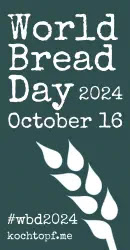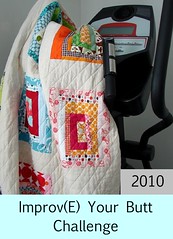Sunday, September 28, 2014
BBB: Robert Mays French Bread from 1660
Ilva (Lucullian Delights), the host kitchen this month, challenged everyone to make Robert May’s ‘French Bread the best way’ from The Accomplisht Cook, Or the Art and Mystery of Cooking (1665-85). (The adapted version is found in English Bread and Yeast Cookery by Elizabeth David.)
In addition, because she thought this recipe would be too easy, we were tasked to be creative and add some kind of design to the top of each loaf.
I was in a whimsical mood the day I baked the bread, so I created faces. Were they aliens, or replicas of Mr. Bill? Who knows.
For ingredients, I used slightly more whole wheat flour than all-purpose flour, and because I rarely have liquid milk in the house anymore, I substituted powdered milk. By chance, I also happened to have 2 egg whites in the fridge.
All my dry ingredients (flour, yeast, salt, and milk) were mixed together; the egg whites were beaten with some of the water, then added, along with the remaining water, to the dry mixture. The resulting dough was allowed to rest for about 15 minutes, followed by the kneading-rising-shaping-rising process.
This is a tasty, simple bread, that isn't particularly time-consuming and serves well as an 'everyday' bread.
To check out the Babes' results and versions and see which Buddies joined the challenge, head over to Ilva's website. You'll find the recipe there as well.
Monday, September 1, 2014
Bread Baking Day #70: Breadsticks
For August's edition of Bread Baking Day, we were asked by our hostess, Marion, to create some breadsticks.
Since I have two tubs of lively sourdough starter in my refrigerator, I decided that I would search for a breadstick recipe that uses starter and also whole wheat flour, if possible.
Luckily, I came across a simple recipe, although it was a bit strange, leading to last minute modifications.
After mixing all the ingredients together, the dough was actually a batter. I thought that would be a little challenging to form into breadsticks, so I add enough additional flour to make a soft dough that I could pat out on my board. There is no rising time, and the breadsticks form quite easily and quickly.
The second change to the recipe was the baking time. Had I left them in the 450 degree oven for the full 25 minutes, we'd be looking at totally black, charred sticks. As it was, they came out very crispy. I would probably make these again, but I would bake them at a lower temperature (425) and for much less time (10 minutes?). For this recipe, it is crucial to watch the baking (and take notes!).
Given the changes, I would still recommend trying these breadsticks as they were pretty tasty.
Event #70 was brought to us by Marion (MaRa) and Zorra of Kochtopf. Check there in a few days for the roundup.
397 g fresh sourdough starter
40 g semolina flour, whole-wheat flour, or bread flour (will need to add more flour for a soft dough)
15 g sesame seed, toasted
10 g olive oil
9 g dried milk powder
6 g kosher or sea salt
5 g diastatic malt powder (optional)
Bread flour for dusting dough and work surface
Gray salt for sprinkling bread sticks
Since I have two tubs of lively sourdough starter in my refrigerator, I decided that I would search for a breadstick recipe that uses starter and also whole wheat flour, if possible.
Luckily, I came across a simple recipe, although it was a bit strange, leading to last minute modifications.
After mixing all the ingredients together, the dough was actually a batter. I thought that would be a little challenging to form into breadsticks, so I add enough additional flour to make a soft dough that I could pat out on my board. There is no rising time, and the breadsticks form quite easily and quickly.
The second change to the recipe was the baking time. Had I left them in the 450 degree oven for the full 25 minutes, we'd be looking at totally black, charred sticks. As it was, they came out very crispy. I would probably make these again, but I would bake them at a lower temperature (425) and for much less time (10 minutes?). For this recipe, it is crucial to watch the baking (and take notes!).
Given the changes, I would still recommend trying these breadsticks as they were pretty tasty.
Event #70 was brought to us by Marion (MaRa) and Zorra of Kochtopf. Check there in a few days for the roundup.
Sourdough Bread Sticks
Prep Time: 30 minutes to make dough; 25 minutes to
bake | Servings: Makes about 2 dozen 11-inch bread sticks
Ingredients
Coarse semolina for dusting baking sheets397 g fresh sourdough starter
40 g semolina flour, whole-wheat flour, or bread flour (will need to add more flour for a soft dough)
15 g sesame seed, toasted
10 g olive oil
9 g dried milk powder
6 g kosher or sea salt
5 g diastatic malt powder (optional)
Bread flour for dusting dough and work surface
Gray salt for sprinkling bread sticks
Instructions:
Preheat the oven to 450°F. Line 2
baking sheets with parchment paper or nonstick baking mats and dust them with
the coarse semolina. Hopefully, your fresh sourdough starter is very loose and
bubbly and at room temperature. This is the easiest state to add ingredients.
Stir in the semolina flour, sesame seeds, olive oil, dried milk, salt, and malt
powder. Mix just until evenly incorporated.
Scrape the dough out of the bowl
onto a heavily dusted work surface. Push and prod it into as even a rectangle
as you can. Dust the top with more flour. With a dough scraper, cut the dough
into strips about 1/2 inch wide and 5 inches long. Dust lightly with flour so
they don't stick to each other. Pick up each strip by the ends and let it
stretch between your fingers until it is as long as you want it. Sometimes the
dough will not want to stretch, in which case, hold it by the middle and let
gravity pull at the ends. Or gently stretch the dough with your fingers. As
each bread stick is shaped, transfer it to the prepared baking sheet. Your
bread sticks will be uneven looking, very rustic, and authentic. Grind salt
over the bread sticks.
Bake them for 25 minutes, rotating
the pans front to back and top to bottom 1/2 way through the baking time. You
do not need to let the dough rest between shaping and baking. Remove and
let the breads cool on a rack. Choose one as a cook's snack. If the breads are
not sufficiently crisp, turn off oven, and return them to the oven, placing
them directly on the baking stone or oven rack for a few minutes. Freshly baked
bread sticks tend to have a short shelf life. To refresh and crisp them
further, you can dry them in a 150°F after baking and cooling. As always, keep
tasting as you go.
Note: Best advised to lower the oven temperature and take them out long before 25 minutes is up. Keep an eye on the bread sticks so they don't burn!
Note: Best advised to lower the oven temperature and take them out long before 25 minutes is up. Keep an eye on the bread sticks so they don't burn!
Subscribe to:
Posts (Atom)









